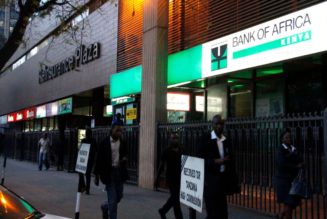
Loans by commercial banks fell by Sh158.2 billion in the first six months of 2024, underlining the impact of high interest rates on credit demand and loan defaults.
Disclosures by the Central Bank of Kenya (CBK) shows total lending by the industry fell by 3.8 percent even as it attributed part of the drop to changes in the valuation of foreign exchange denominated loans and repayments.
Total banking sector lending stood at Sh4.041 trillion in June 2024 from Sh4.199 trillion in December 2023 with the decline in loans hitting major economic sectors.
“The sectors that recorded decreased gross loans are manufacturing, transport and communication, trade, personal and household, tourism and restaurant and hotels, building and construction, energy and water, agriculture and real estate,” CBK notes.
Commercial banks average lending rates soared in the first half of 2024 in line with the increased benchmark rate by the CBK. The weighted average lending rate increased to 16.85 percent in June 2024 from 14.64 percent in December last year.
The benchmark Central Bank Rate (CBR) climbed to 13 percent in February from 12.5 percent in December and remained at the same level through June before a slight cut last month to 12.75 percent.
The resulting higher interest rates subdued the demand for credit as some borrowers found the cost of loans to be untenable while commercial banks tightened credit standards on the rise of loan defaults to limit their exposure to impairments.
Credit risks spiked as the industry’s non-performing loans (NPLs) to gross loans ratio jumped to 16.3 percent in June 2024 from 14.8 percent at the end of 2023.
“Gross NPLs increased by 5.8 percent from Sh621.3 billion in December 2023 to Sh657.6 billion in June 2024, mainly due to a challenging business environment.
The main sectors that recorded increased NPLs are real estate, trade, agriculture, tourism, restaurants and hotels, personal and household, building and construction, energy and water and financial services,” the CBK added.
Private sector credit growth slumped to 3.9 percent in June compared to 13.9 percent at the end of last year mirroring the bank’s reduced disbursements.
Commercial banks have, nevertheless, increased their income from lending over the same period despite the fall in loans from higher interest rates which have also been anchored on the implementation of risk-based pricing which assigns greater loan costs to the riskiest borrowers.
Equity Group for instance saw its net interest income rise by 17.2 percent to Sh54.4 billion in the half year ended June despite a 3.2 percent slump in the loan book to Sh791.12 billion across the six months.
Equally, Absa Bank Kenya netted higher interest income at Sh23 billion in the same period from Sh19.2 billion a year earlier even as loans to customers slipped by 0.5 percent to Sh316.3 billion.
Average interest rates on commercial banks have fallen slightly to 16.84 percent in July from 16.85 percent in June marking the first decline in 21 months since October 2022.
The slight ease in borrowing costs signals hope for cheaper loans in the near term with CBK being widely seen to have paused its increase in benchmark lending rates after the August cut on easing inflation and exchange rate pressures.
CBK expects bank lending to improve towards the end of the year but sees default risks remaining persistent.
“Private sector credit growth is expected to pick up at the back of improved liquidity positions by banks, owing to aggressive loan recoveries and end of year festivities,” CBK noted.
The banking sector has remained stable and resilient in the period with the average commercial banks liquidity and capital adequacy ratios standing at 53.5 percent and 19.1 percent respectively against statutory limits of 20 and 14.5 percent.









